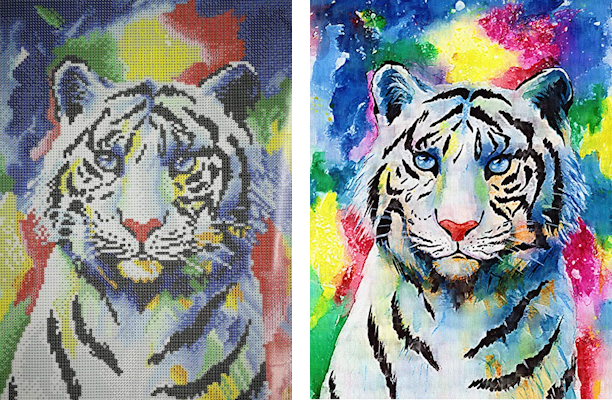 |
Monopoly - A chance to work with larger amounts of money. |
Monopoly is a game we played A LOT as kids. So much so that I eventually gave it the nickname Monotony because of how long the game can drag on (hours) and how long you may have to wait for each person to play (what seems like hours), depending on how many different transactions they want to make. As the name suggests, the goal is to control as much of the property as you can, and then develop that property with houses and hotels to bring in as much money as you can. The wealthiest person at the end is the winner.
Despite the fact that I don't like to play it on my personal time, except for maybe one of my Christmas versions once a year, I will still take it to a therapy session on occasion. In that case, we know we have less than an hour to play so we follow one or both of the speed rules: 1) Everyone gets 3 property cards, randomly chosen, before the game starts and 2) when a player lands on a property and it is for sale, but they don't want to buy it, it is sold to the highest bidder. In addition, we set a time to stop and the person with the most money and property combined at that time is the winner.
The typical reason I would take this game to therapy would be for the money. Once kids are at the point that they can start counting larger amounts, we will play this and that person will be the banker. That way they have lots of opportunities to count money and make change.
Here is the set-up for a Monopoly game. Every Monopoly I have seen has the same number of spaces around the board, the same denominations and two draw piles. However, as you can see in the image above, Monopoly comes in a lot off different themes. Here is an image of the original Monopoly game.
 |
| The original Monopoly game. |
Money comes in 1, 5, 10, 20, 50, 100 and 500. There are also Monopoly Junior and Late for the Sky Opoly games for kids, where money typically comes in 1, 2, 3, 4 and 5. A fun place to start when you initially start learning about bills.
There are eight spaces on the board that will tell you to draw a card from one of the piles (chance and community chest in the original game). If you land on one of those spaces, draw a card and do as it says. Some of the cards for the original game are go to jail, get out of jail free, advance to the nearest railroad and pay the owner twice the amount that he is otherwise entitled, you win a beauty contest collect $10, go back 3 spaces, you are elected chairman of the board - pay each player $50.
Late for the Sky also manufactures Monopoly-type games. The board is the same set up, the money denominations are the same values but different colors, there are two draw piles, same quality and the price is usually cheaper than the Monopoly brand games.
If you haven't played Monopoly in awhile, you may be shocked to see the variety of themes the game comes in now. From animals to food to cities to hobbies to sports to TV shows - you could probably play a different version every day for a year.
Object:
Have the most money/property at the end of the game. Either play for a specified time, or play until everyone goes bankrupt but one person, the winner.
Set up:
Place the board in the middle of the players. Place the cards for the two draw piles on the board. Pass out money to each player according to the directions. Assign one person as the banker and one person to distribute the property cards.
Play:
Players take turns throwing the dice and advancing that number of spaces along the board. If they land on a property that is not owned, they may buy it from the bank if they choose. If they land on a property that is already owned by another played, they must pay them the rent that is printed on the property card. Once a player has purchased all of the property of a single color - a monopoly - they are eligible to buy and place houses and then hotels on each of those properties. Houses and hotels are costly to buy, but as other players land on them, their rent is much higher. The more of these monopolies that you own, and the more they are developed, the more you will collect, eventually forcing your opponents into bankruptcy. Keep playing (this can take hours) until someone wins.
To see a list of games with money, click here.
Try this:
- Give the player a large bill to make change from. For instance, if your rent is $17, give the player a $100 bill instead of a $20 or counting out the exact change for him (for more practice counting money).
- Let players develop any property they own, without requiring monopolies. This usually results in a quicker game.
- Work
on money skills, visual discrimination, spatial relations, manual
dexterity, fine motor precision, following directions, planning,
executive functioning skills, negotiation skills, process skills,
socialization skills, play and leisure exploration and participation
In
the box: Varies by theme, but typically board, money, property cards,
drawing cards, 6 theme-oriented pawns, two dice, houses and hotels
(maybe called different things in different games).
If you are interested in purchasing this game or just want more information, click on the image below.







